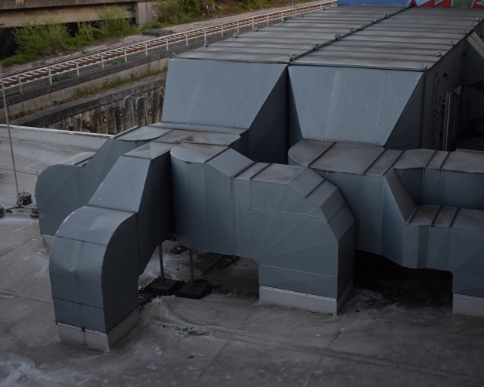Branch ducting is cheaper because the materials are cheaper and there’s less of it. Problem is, it suffers from high static pressure, or air resistance, which makes it noisy and puts additional load on the fan motors, which in turn can become noisy and more expensive to run. Even a small increase in running cost adds up when it’s running 24x7 forever. Radial ducting has around half the static pressure, so everything runs more efficiently.
Branch ducting is also full of sharp 90-degree bends, which create turbulence, add noise and mean the system can’t easily be cleaned in five years when it’s lined with dust and grime. Radial ducting has smooth, sweeping bends that can be cleaned. Quality radial ducting has an anti-bacterial, anti-static lining to prevent dust build up and is made from virgin plastic without contamination risks.
Finally, branch ducting connects one room to another, which allows crosstalk sound to travel from one room to room another too. Radial ducting connects to a manifold that feeds each room separately to prevent crosstalk. Cheap manifolds will distribute the air, but quality manifolds are acoustically lined to further attenuate unwanted sounds. Let’s just say radial ducting is better than branch, and anyone who disagrees hasn’t had one then replaced it for another like we have, but what about the rest of the system? Using the correct insulated ducting to connect the manifolds to the MVHR and the MVHR to atmosphere is arguably more important
Flexi duct is a popular option but is now outlawed by the NHBC for health and durability reasons. It looks ok to the untrained eye and is certainly cheap, but how much will it cost to replace when it eventually fails? PVC and steel ducting wrapped with lagging satisfies the regulations, but it doesn’t stop condensation build-up when cold air travels through a pipe inside a warm space. Condensation normally collects on top of the MVHR instead of inside it, then runs down the back and eventually through your ceiling. High grade Expanded Polyethylene (EPE) ductwork is the only product that eliminates condensation risk, even though a single bend costs the same as 5M of flexi.
Installing two 45-degree EPE bends instead of one 90-degree bend adds even more cost, but it improves the laminar air flow which makes the whole thing run quietly and more efficiently, so long term it’s another £20 well spent. Cutting corners to cheapen a system and win business is easy, but in our experience when you buy cheap you buy twice.





